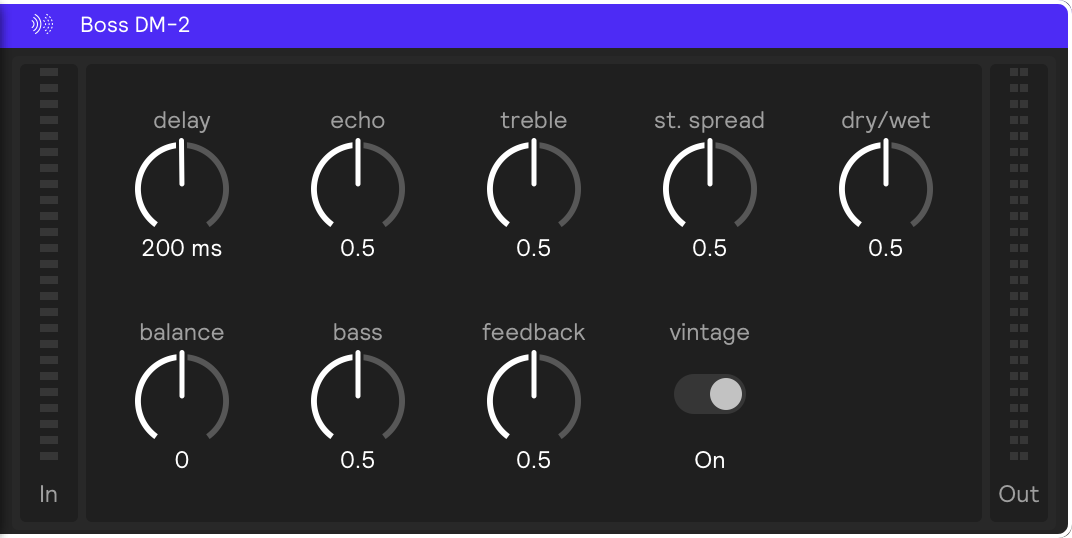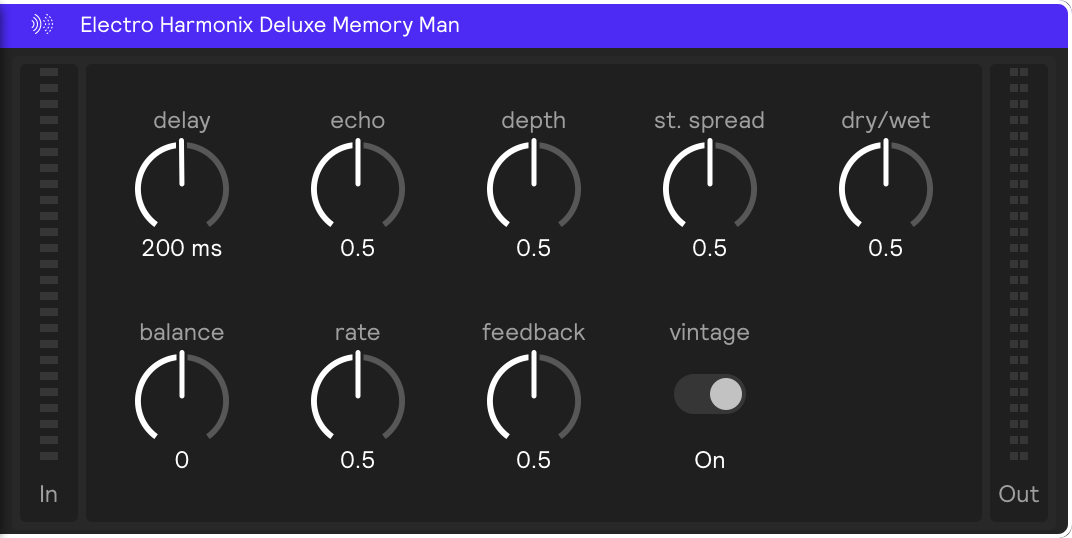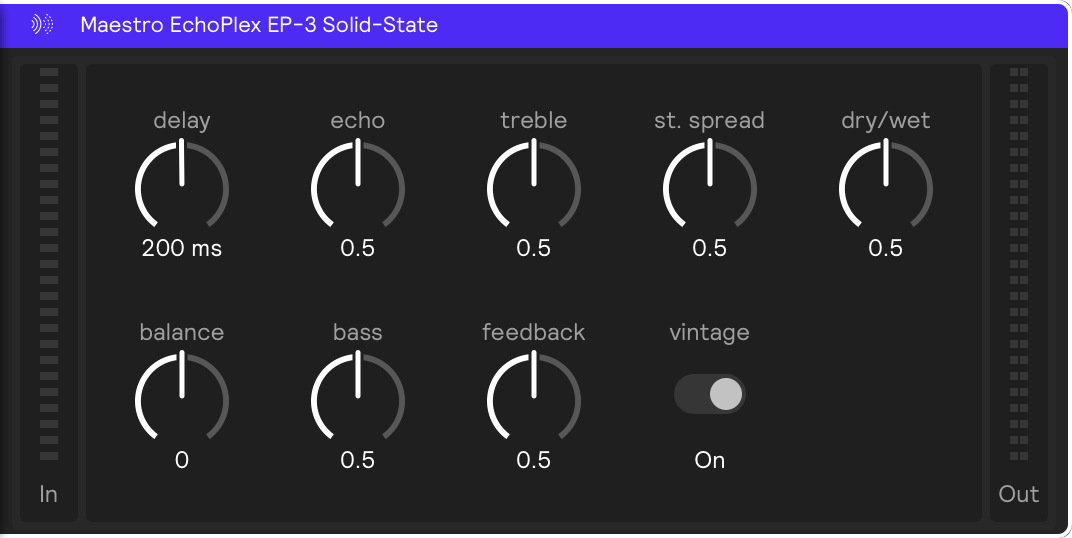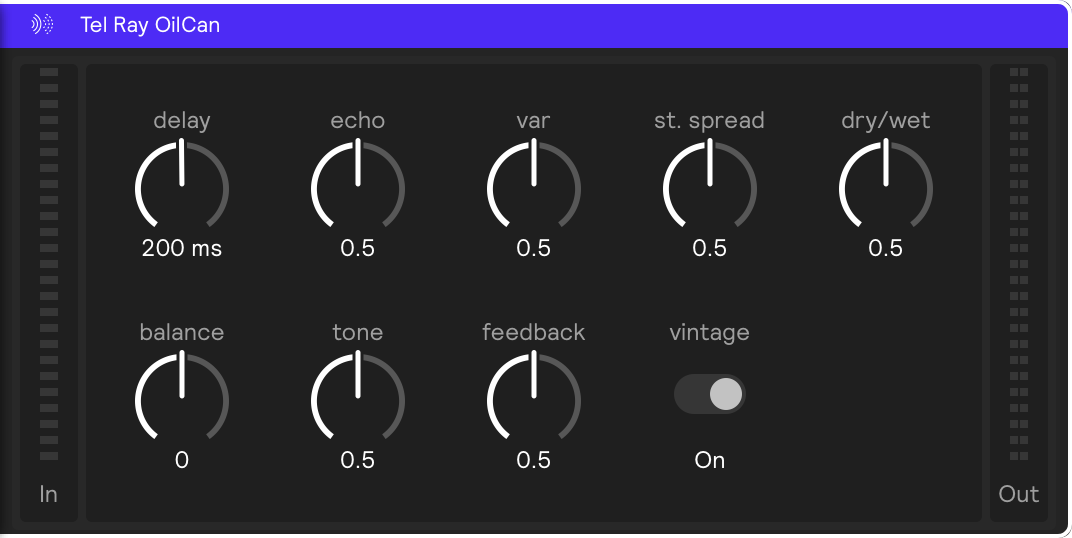Effects
Adding effects
Effects can be added to almost anything in Sensory Percussion 2: generators, controllers, and audio buses all have fx panels. Simply drag an effect from the library, hover over the module you want to apply the effect to (it will become outlined in blue), and drop it. It's that easy! (Note that effects can't live on their own layer; they must be placed inside of a module on an existing layer.)
You can also add effects from any effect panel by clicking the + Add Effect dropdown button.
Effects can also be added to submixes and the main mix in the Mix View.

Chorus
The Voices input allows you to increase or decrease the number of phasing filters.
Rate controls the speed of the modulation.
Feedback knob governs the level of modulated signal that is sent through the system again.
Increasing the stereo parameter widens the left - right panning range of the effect.

Compressor
Sensory Percussion's compressor is quick and easy to use - just add the effect, turn up the ratio and pull down the threshold to get the effect pumping. Tweak the attack, release, and knee to adjust the dynamic profile of the effect. Note: Sidechain will be added to this effect in a future update.
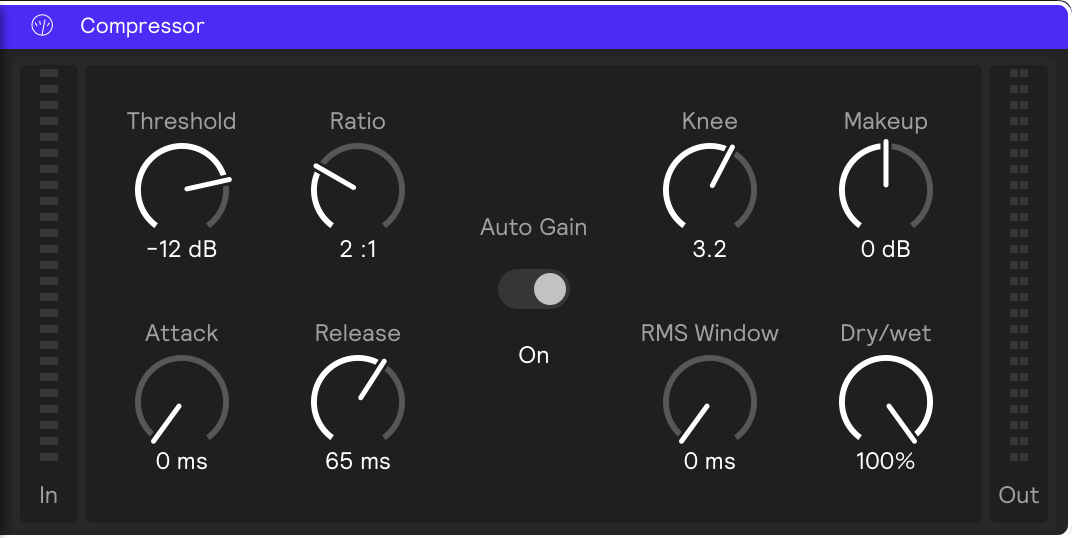
3 Band EQ
3 Band EQ behaves the same way as the Filter effect, but it contains 3 filters: Lo, Mid, and Hi. You can adjust the cutoff for lo and hi, as well as the gain for all three of them.
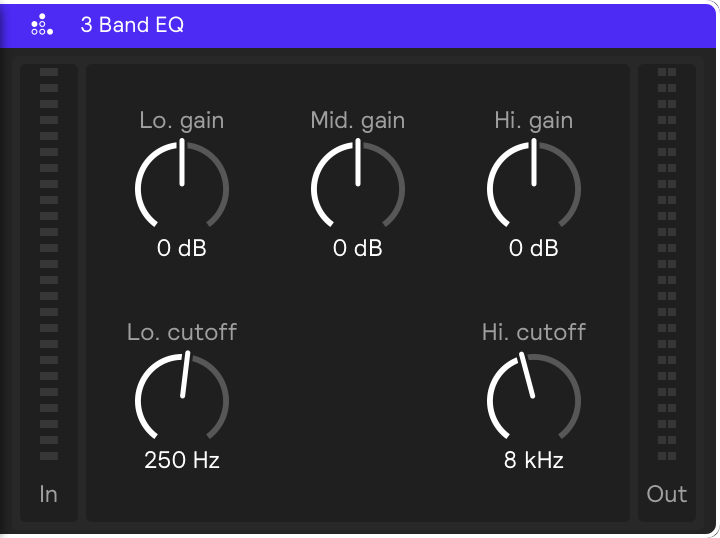
EQ Band
The EQ Band effect adds more filtering options. In addition to Low Pass, High Pass, and Band Pass, this effect also offers Notch, which removes only a small segment around the cutoff frequency; High shelf and Low shelf, which aren't as extreme as HP/LP, but reduce frequencies below or above the cutoff; and Peak, which boosts a small segment around the cutoff while filtering everything else. The resonance knob increases the volume at the cutoff frequency.
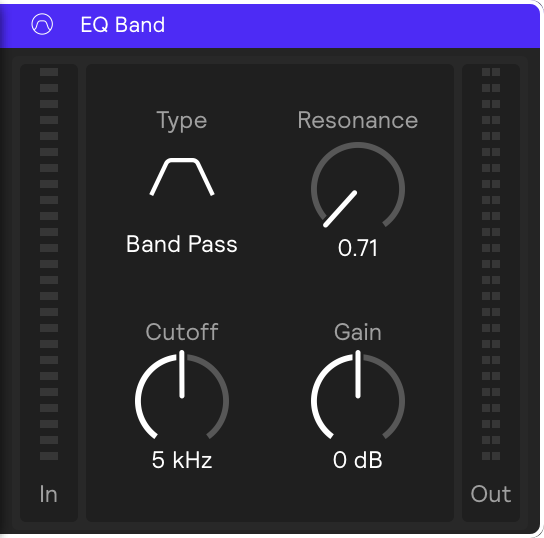
Filter
The filter effect is a collection of resonant filters that will be a versatile tool for you in your musical endeavors with Sensory Percussion. The Cutoff Frequency knob sets the frequency above and/or beneath which will be filtered from the signals, and the Resonance knob sets the amount that frequency will resonate.
You can choose from three different filter types with the Type dropdown: Low Pass (lp), High Pass (hp), and Band Pass (bp).
Low pass means that any frequency above the cutoff will be filtered out of the sound completely, and a high pass filter removes any frequency below the cutoff frequency. The band pass filter allows a wide band of frequencies around the cutoff to pass through the filter.
Flanger
Flanging is created by duplicating the audio signal and delaying it by a minuscule amount, rather than applying all-pass filters like with chorusing and phasing modulations.
The depth knob controls the sweeping range of the effect, whereas the rate controls the speed of the modulation.
The feedback knob governs the level of modulated signal that is sent through the system again.
Increasing the stereo parameter widens the left - right panning range of the effect.
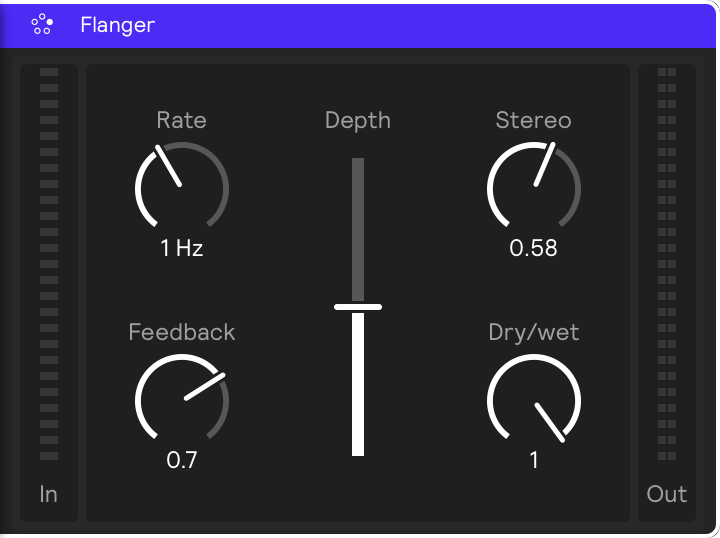
Fx Chain
The Fx Chain is like a Group for your effects. If you have multiple effects, you can drag and drop them into one Fx chain. Right now, the Fx chain is mainly useful for organizing layers, but it will have more parameters in a future update.
Limiter
The primary function of the limiter is to prevent the audio signal from exceeding a certain threshold (set in dB with the Threshold knob). It does this by reducing the gain of the signal when it exceeds the threshold. The Release knob sets the time it takes for the gain to return to normal after the signal falls below the threshold.
The Pre Gain slider sets the level of the signal before it hits the limiter.
This is useful for boosting the level of a signal without clipping, or for preventing a signal from clipping when it is too loud.
Phaser
The Voices input allows you to increase or decrease the number of phasing filters.
Rate controls the speed of the modulation.
Feedback knob governs the level of modulated signal that is sent through the system again.
Increasing the stereo parameter widens the left - right panning range of the effect.
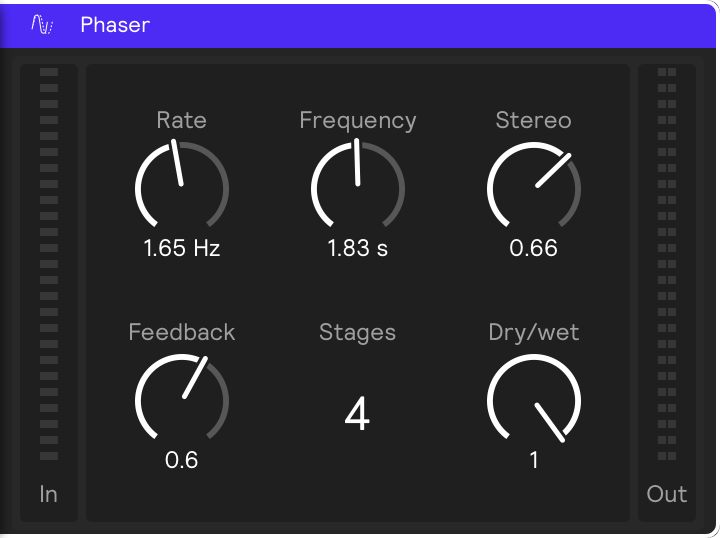
Reverb
The reverb unit in Sensory Percussion offers you a lot of control over the spatial environments you create for your kits.
Pre-delay (in milliseconds) sets the onset time for the reverberation. Set to zero, the reverb will kick in as soon as you strike the drum.
Room Size, of course sets the size of the room - increasing or decreasing the space in between early reflections.
Damping adds a specialized lo-pass filter to the reverb in order to make the reverb sound muted (like there is padding on the environment's walls).
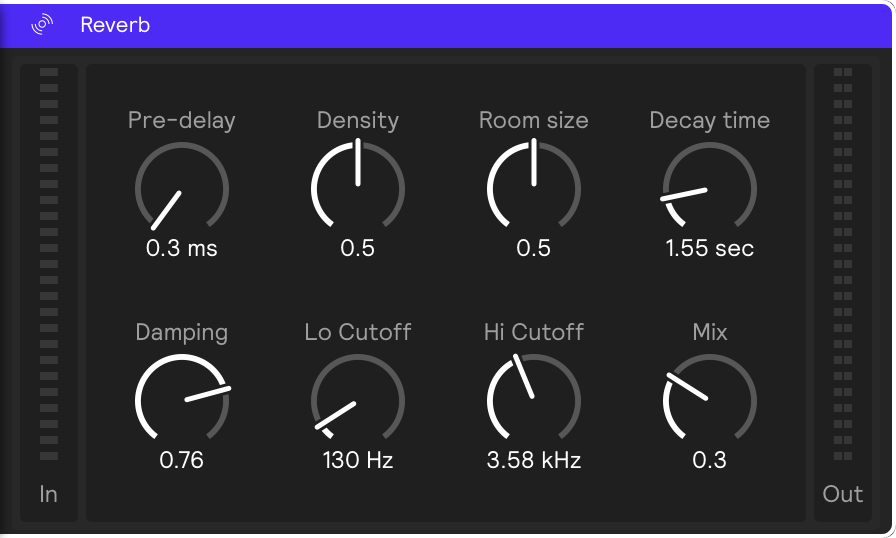
Soft Clipper
The soft clipper effect sets a decibel ceiling, and clips anything that goes above that ceiling, softening the waveform around the peak, creating harmonic distortion, rather than a digital clip sound. Note: the Clipper and Soft Clipper effects will be merged in a future update.
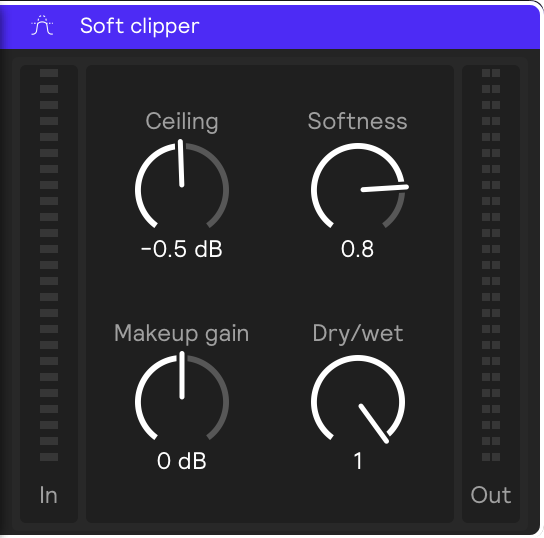
Tube Amp
This amp simulation effect emulates the classic 12AX7 tube found in so many vintage amps.
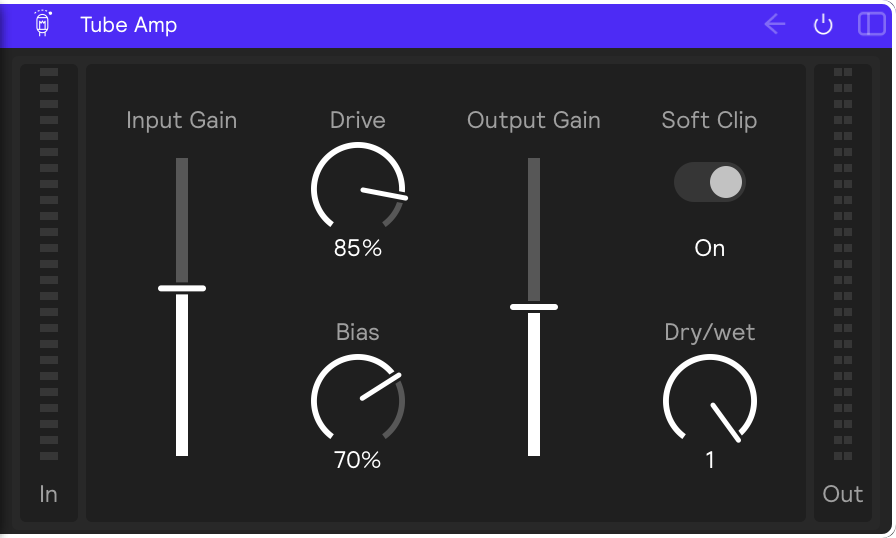
Delays
Sensory Percussion V2 has 5 different delay effects, each with their own slightly different parameters. However, all of them have the following parameters in common: delay, balance, echo, feedback, and mix
The delay knob sets the space between the echoes.
The balance knob sets the midpoint of the echoes. More to the left, and the echoes will center on the left side of the stereo image, more to the right and the effect will be centered on the right side of the stereo image.
The echo knob controls the volume of each echo (but not the initial sound).
The feedback knob controls how many times the echoes will repeat.
The dry/wet knob controls how much of the effect you hear. Turning it all the way to the left will result in a completely dry, unprocessed signal. Turning it to the right will result in a completely wet signal.
All other parameters are unique to each of the five kinds of delays.
- Boss DM-2
- Electro Harmonix Deluxe Memory Man
- Maestro EchoPlex EP-1
- Maestro EchoPlex EP-3 Solid-State
- Tel Ray OilCan
